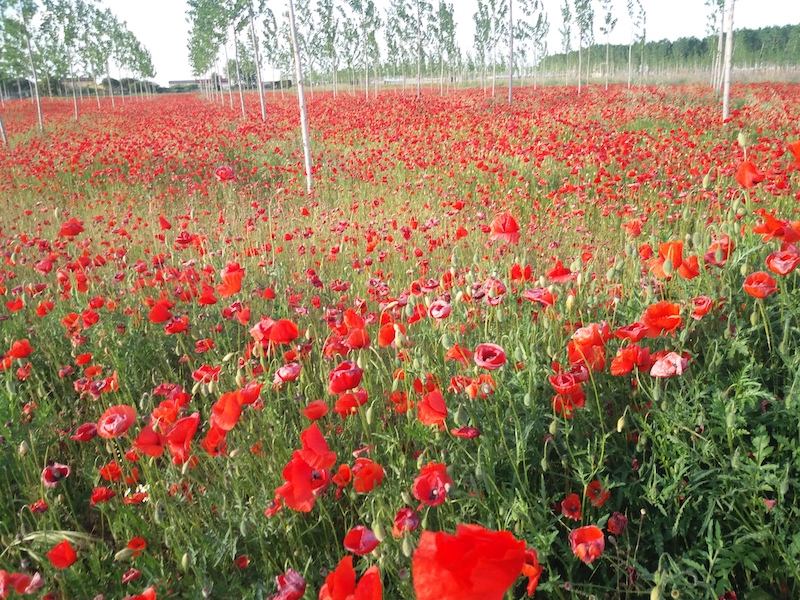- Rete Natura
- Man+
- Agrarian Reform
- Glossary
- Protected Areas
- Birdwatching
- History and Archaeology
- By Boat and on Horseback
- Slow Tourism in the Veneto Parks
- Green Tour - Greenery in Motion
- Water Museum Of Venice
- Download the APP
- Delta Slow
- Delta in Art+
- Cinema
- Letteratura
- Fotografia
- Pittura
- Musica
- Spettacolo
- Webcam
- Visite guidate
- Noleggio bici
- Escursioni a cavallo
- Escursioni in barca
- Escursioni in canoa
- Park Authority+
- Offices and Services
- Who we are
- Completed projects
- Where we are
- Notices and Announcements
- News Archive
- Plan of the Park
- Vas/Vinca
- Activities of the Technical Committee
- Transparent Administration until 22/11/2016
- Legal Notices
- List of Thematic Sites
- Authorisation Forms and Applications
Home » Living the Delta » Museums and Visitor Centers
Ariano nel Polesine fossil dunes
45012 Ariano nel Polesine (RO) | View on Map
Municipality: Ariano nel Polesine
The Territorial Evolution of San Basilio
The fossil dunes in location S. Basilio and Grillara, in the Municipality of Ariano nel Polesine, form part of the system of coastal dune bars dating back to the pre-Etruscan and Etruscan periods and to the early Middle Ages. They developed from the river Adige to Comacchio: today, only occasional evidences remain both in Polesine and in the area of Ferrara.
As a matter of fact, around the 10th century BC, the territory of San Basilio was very different from the present one, with a coastline characterized by sand dunes covered with vegetation, where the northern branch of one of the most ancient courses of the river Po, Po di Spina, flowed into.
In the Roman Age, a branch of the river Po flew here, probably Olana, quoted by Pliny.
In the Middle Ages, because of the fluvial overflow caused by the so-called "rotta di Ficarolo", the coastline began to advance faster and new territories formed, emerging exactly in the area of San Basilio.
The conformation of the coastal bars changed and took on a more arched shape into which the southernmost branch of Po di Ariano flows. The sand excavation and the levelling of dunes which were also ten meters high for land cultivation are the causes of a deep and irreparable degradation of these dune systems which, in many cases, have been almost eliminated.
It is the case of the dunes of Isola di Ariano which, differently from the ones in the municipalities of Rosolina and Porto Viro, have been mainly levelled till recent times.
Narrow and isolated sand strips belonging to these dunes have been preserved, even if they are threatened by agricultural cultivation and in some cases by some sand quarries.
These dune relicts are important both from a landscape and an economic point of view, since they represent real "islands" in the surrounding landscape.
-
Grillara Dune: Dune subject to a few human changes given to levelling and urbanization works.
-
Dune in Gozzi estate: Situated in Gozzi estate, between Grillara and San Basilio, this is the dune which, because of the levelling works, has been subject to deep changes.
-
Dune in San Basilio: It is situated near the road linking San Basilio to Taglio di Po and, for its limited size, can be compared with a wild holm emerging in the sea of the flat sandy countryside. The degradation of the dune has been hindered by its peripheral location and by an electric line crossing it. This dune, together with the dune of Grillara, is the evidence of the environment and landscape of the coastal paleodunes of Ariano nel Polesine.
-
San Basilio: In this very ancient site of great archaeological importance there is the homonymous small church dating back to the 11th-10th century, situated on a fossil dune.
-
Rotta Martino: Rotta Martino, a relict of paleoriverbed adjacent to the fossil dune complex of San Basilio, plays an essential role as far as geomorphology, environment, and landscape are concerned. It is the only close freshwater natural basin present in the Po Delta, in the south of Po di Venezia. It presents a concentration of vegetal species which are not usual in the territory.
-
Nichetti Woodland
© 2024 Ente Parco Regionale Veneto del Delta del Po
via G. Marconi, 6 - 45012 Ariano Polesine (RO)
Telefono +39 0426/372202 - FAX +39 0426/373035
Email: info@parcodeltapo.org
Certified mail: parcodeltapo@pecveneto.it
Telefono +39 0426/372202 - FAX +39 0426/373035
Email: info@parcodeltapo.org
Certified mail: parcodeltapo@pecveneto.it

- - - - - -




